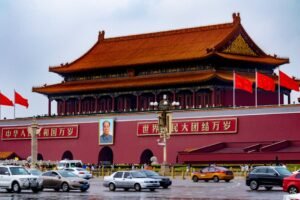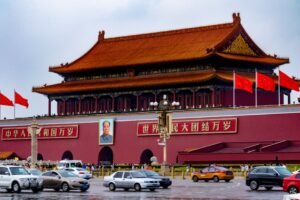The Chinese language is a vast and intricate tapestry woven from a multitude of dialects, each with its own unique characteristics and cultural significance. While Mandarin is often regarded as the standard form of Chinese, the reality is that the language encompasses a rich diversity of dialects that reflect the historical, geographical, and social complexities of the regions in which they are spoken. This article aims to explore the fascinating world of Chinese dialects, delving into their diversity, importance, and the challenges they present to learners and speakers alike.
Understanding Chinese dialects is essential for anyone interested in the language and its cultural context. The term “dialect” in this context can be somewhat misleading, as many of these dialects are not merely variations of Mandarin but are distinct languages in their own right. They can differ significantly in pronunciation, vocabulary, and grammar, making them sometimes mutually unintelligible.
This linguistic diversity is a testament to China’s long history and the myriad of ethnic groups that inhabit its vast territory. Start learning Chinese today at the LC Chinese School in Oslo.
Table of Contents
ToggleSummary
- Chinese dialects are incredibly diverse, with hundreds of different varieties spoken across the country.
- Mandarin and Cantonese are the most widely spoken and important Chinese dialects, with Mandarin being the official language of China.
- There are many lesser-known Chinese dialects that are at risk of disappearing due to lack of speakers and government policies.
- Regional variations in Chinese dialects can be significant, leading to differences in vocabulary, pronunciation, and grammar.
- Chinese dialects play a crucial role in shaping cultural identity and are an important part of China’s rich linguistic heritage.
The Diversity of Chinese Dialects
Chinese dialects can be broadly categorised into several major groups, including Mandarin, Cantonese, Wu, Min, Xiāng, Hakka, and Gan. Each of these groups encompasses numerous local variations that can differ dramatically from one another. For instance, while Mandarin is predominantly spoken in northern China, Cantonese is primarily found in Guangdong province and Hong Kong.
Wu dialects, such as Shanghainese, are prevalent in the eastern coastal regions, while Min dialects are spoken in Fujian province and Taiwan. The diversity of these dialects is not merely a linguistic phenomenon; it also reflects the cultural richness of the regions they originate from. Each dialect carries with it a wealth of idioms, proverbs, and expressions that encapsulate local customs and traditions.
This linguistic variety enriches the Chinese language as a whole and provides insight into the lives and histories of the people who speak them.
The Importance of Mandarin and Cantonese
Mandarin Chinese, known as Putonghua or Standard Chinese, holds a position of prominence as the official language of China and is widely taught around the world. Its significance extends beyond mere communication; it serves as a unifying force among the diverse ethnic groups within China. The promotion of Mandarin has facilitated greater national cohesion and has made it easier for people from different regions to interact and engage with one another.
Cantonese, on the other hand, is not only a vital means of communication for millions in southern China but also plays a crucial role in the global Chinese diaspora. It is particularly prominent in Hong Kong and Macau, where it serves as a cultural touchstone for local identity. The popularity of Cantonese cinema and music has further solidified its status on the international stage, making it an essential dialect for understanding contemporary Chinese culture.
The Lesser-Known Chinese Dialects
While Mandarin and Cantonese often dominate discussions about Chinese language, there exists a plethora of lesser-known dialects that deserve recognition. For example, Hakka is spoken by a significant number of people across southern China and among overseas Chinese communities. It has its own unique phonetic system and vocabulary that distinguishes it from other dialects.
Similarly, the Min dialect group includes several varieties such as Hokkien and Teochew, which are spoken in Taiwan and Southeast Asia. These dialects have rich literary traditions and are integral to the cultural heritage of their respective regions. Despite their importance, many lesser-known dialects face challenges in terms of preservation and transmission to future generations.
Regional Variations in Chinese Dialects
The regional variations within Chinese dialects are strikingly pronounced. For instance, even within Mandarin itself, there are notable differences between the Beijing accent and that of speakers from Sichuan or Taiwan. These variations can manifest in pronunciation, vocabulary choices, and even grammatical structures.
Such differences can sometimes lead to misunderstandings or confusion among speakers from different regions. Moreover, regional dialects often incorporate local slang and expressions that may not be understood by speakers from other areas. This linguistic richness adds depth to the language but also highlights the challenges faced by learners who may struggle to navigate these variations.
Understanding regional dialects is crucial for anyone seeking to engage meaningfully with Chinese culture.
The Role of Chinese Dialects in Culture and Identity
Chinese dialects are deeply intertwined with cultural identity. For many speakers, their dialect is a source of pride and a vital link to their heritage. Dialects often carry unique cultural references, idiomatic expressions, and traditional stories that reflect the values and beliefs of their communities.
This connection to culture is particularly evident during festivals and family gatherings when dialects are used to convey shared experiences and histories. Furthermore, the use of dialects can foster a sense of belonging among speakers. In many cases, individuals may feel more comfortable expressing themselves in their native dialect rather than in Mandarin.
This emotional connection underscores the importance of preserving these dialects as they are not merely tools for communication but also vessels for cultural expression.
The Challenges of Learning and Understanding Chinese Dialects
For learners of Chinese, navigating the complexities of dialects can be daunting. The sheer number of dialects and their variations can create confusion for those attempting to master the language. While Mandarin serves as a common ground for communication, learners may find themselves at a disadvantage when interacting with speakers of other dialects who may not be fluent in Mandarin.
Additionally, the tonal nature of Chinese languages adds another layer of complexity. Different dialects may employ varying tonal systems, which can lead to misunderstandings if learners are not familiar with these nuances. As such, mastering a specific dialect requires dedicated effort and exposure to authentic language use within its cultural context.
The Future of Chinese Dialects
The future of Chinese dialects is uncertain as urbanisation and globalisation continue to shape language use across China. Many younger generations are increasingly adopting Mandarin as their primary means of communication, leading to concerns about the potential decline of regional dialects. This shift poses a risk to the rich linguistic diversity that characterises Chinese culture.
However, there are also positive developments on the horizon. Efforts to promote regional dialects through education and media are gaining traction. Local governments and cultural organisations are recognising the importance of preserving these languages as part of their heritage.
Initiatives aimed at documenting and teaching lesser-known dialects are emerging, providing hope for their continued vitality.
Preserving and Promoting Chinese Dialects
Preservation efforts for Chinese dialects are crucial in ensuring that these languages do not fade into obscurity. Educational programmes that incorporate local dialects into school curricula can help instil pride in cultural heritage among younger generations. Additionally, community initiatives that celebrate local customs through festivals or storytelling events can foster interest in regional languages.
Digital platforms also play a significant role in promoting dialects. Social media and online resources provide opportunities for speakers to share their language and culture with a broader audience. By leveraging technology, communities can create content that showcases their unique linguistic heritage while engaging younger audiences who may be more inclined to connect through digital means.
The Influence of Chinese Dialects on the Global Stage
As China continues to assert its influence on the global stage, so too do its dialects gain recognition beyond its borders. The rise of Chinese communities around the world has led to an increased interest in various dialects among non-Chinese speakers. Language schools and cultural centres are beginning to offer courses in Cantonese, Hakka, and other dialects alongside Mandarin.
This growing interest reflects a broader appreciation for linguistic diversity and cultural exchange. As more people seek to understand the nuances of Chinese culture through its languages, there is an opportunity for greater cross-cultural dialogue that enriches both sides.
Embracing the Richness of Chinese Dialects
In conclusion, the richness of Chinese dialects offers a window into the diverse cultural landscape of China. From the widely spoken Mandarin and Cantonese to lesser-known varieties like Hakka and Min, each dialect contributes to the intricate mosaic that defines the Chinese language. As we navigate an increasingly interconnected world, it is essential to embrace this linguistic diversity rather than allowing it to diminish.
At LC Chinese School in Oslo, we recognise the importance of not only teaching Mandarin but also celebrating the various Chinese dialects that enrich our understanding of this ancient culture. Our courses provide students with an opportunity to explore not just the language but also the cultural contexts that shape it. By fostering an appreciation for all aspects of Chinese language and culture, we aim to equip our students with a deeper understanding that transcends mere vocabulary or grammar—an understanding rooted in respect for the rich tapestry that is Chinese dialectology.
Start learning Chinese today at the LC Chinese School in Oslo









